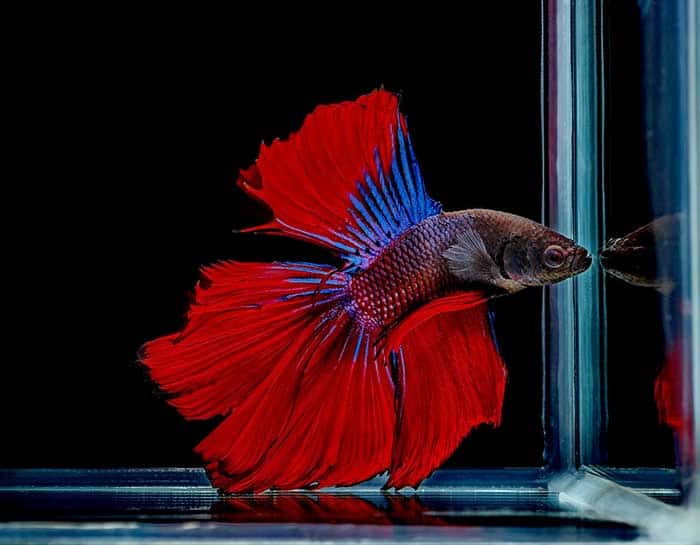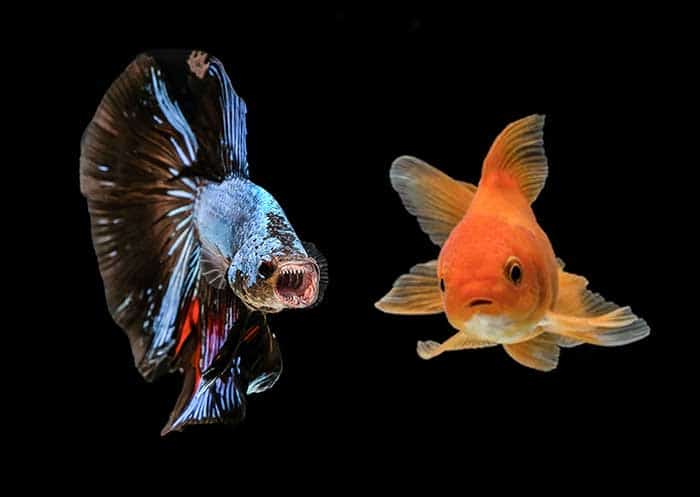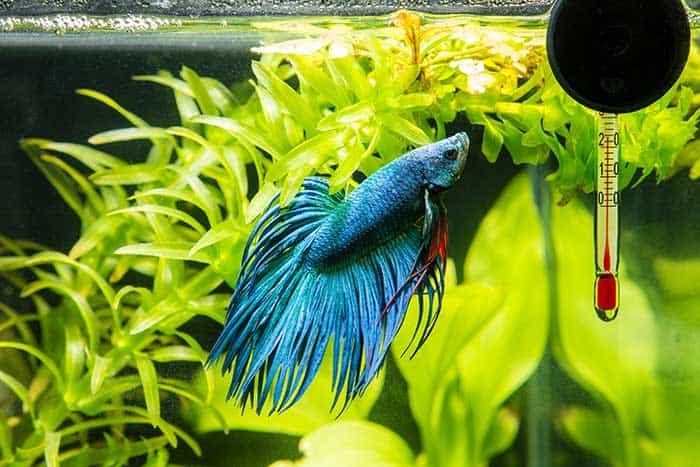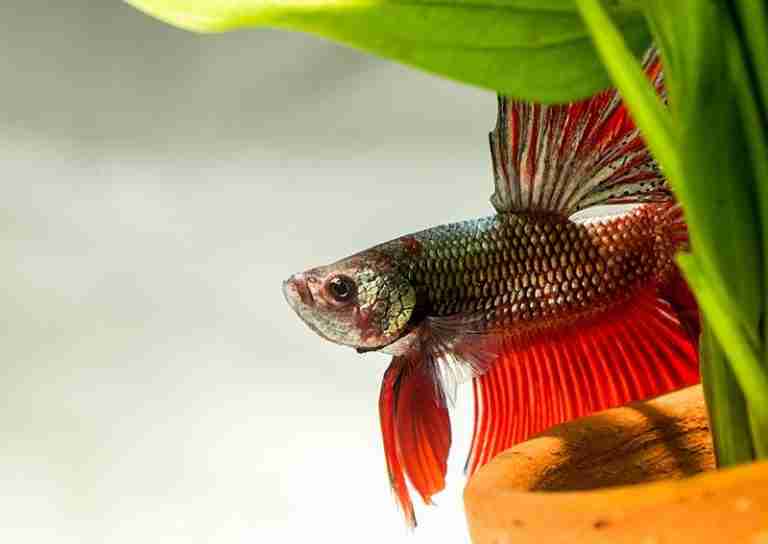How Long are Betta Fish Pregnant For
Ever wondered how long are betta fish pregnant for? It’s a common question, especially among beginners that want to try breeding or have a betta that looks fat and pregnant.
Betta fish do not get pregnant as they aren’t livebearers. Betta fish lay eggs that hatch into fry or baby fish after getting fertilized by a male betta. Females can be pregnant with eggs for several weeks and will lay between 5 and 500 eggs at a time. Male betta fish make a bubble nest before mating and place each egg within it.
Betta fish gestation period is not the same as that of livebearers as gestation typically refers to the length of time a fish is pregnant with live fish before giving birth. The embryos of freshly fertilized betta eggs can hatch in as little as 24-36 hours.
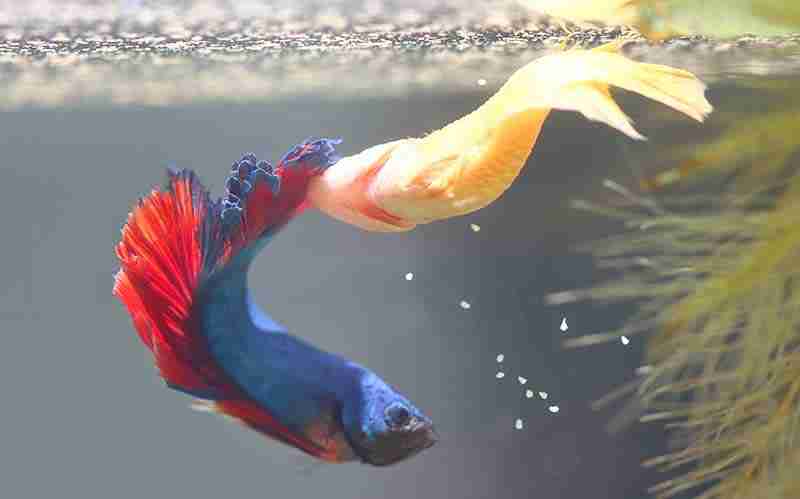
The betta mating process is quite interesting to watch, so I will describe the process in more detail throughout the rest of this post.
To get the most natural mating behavior, I recommend you provide a comfortable and clean environment where your betta fish can feel relaxed.
Make sure to check out our guide on caring for betta fish.
How Long Does A Betta Fish Stay Pregnant With Eggs
More commonly, people ask how long are betta fish pregnant for, when referring to the period they carry their eggs. Female betta fish typically carry eggs for 1 or 2 weeks when ready to mate, carrying them in her ovipositor until she is ready to release them. The eggs are fertilized and placed into the bubble nest for between 24 and 36 hours.
The female can lay a new batch of eggs every 48 to 72 hours until mating is complete, usually by mid-summer in their natural environment, and dependent on water conditions.
Signs Of A Pregnant Betta Fish
A pregnant betta fish will develop some physical signs that are quite easy to spot, and these changes occur together, so you won’t need to look out for just a single sign.
When a pregnant female betta is ready to mate, her stomach will look a little fuller where she may appear pregnant, and this is the perfect time to introduce her to a male betta, especially if the male has built a bubble nest ready to woo the female.
Usually, a fertile female betta will also develop verticle stripes on her body when ready to mate. These stripes can be light or dark in color and are not to be confused with horizontal stripes that signify stress.
One final sign that your female betta is pregnant is a slight loss of color. This does not always happen, and sometimes your betta can actually become more vibrant in color, in which case any change in color combined with the other signs will be a sure indicator that she is ready to mate.
How Many Eggs Do Bettas Lay
A pregnant betta fish can have an abundance. Fuller, pregnant betta fish will often mate a second time soon after the initial mating process.
The number of eggs a betta will lay depends on factors such as her size and age. A younger, smaller betta fish may only produce 5 to 50 eggs per mating cycle, whereas an older, larger female can produce up to 500 eggs.
Not all betta fish eggs become fertilized during mating. Unfertilized betta eggs are usually eaten by either male or female betta fish and are a rich source of protein.
What Do Betta Fish Eggs Look Like
A betta fish egg will look like a grain of salt with a slightly more transparent appearance. They can be easy to miss as they can often look like bubbles coming away from the female’s body as she releases eggs from her ovipositor.
How Do Betta Fish Mate
The betta mating process is wonderful to watch, and it’s interesting to see how males and females interact.
There are several parts to the betta mating process, detailed below.
- Male bettas build a bubble nest.
- The male tries to entice a female betta to inspect his bubble nest.
- The male betta nudges the female in the stomach area, where she carries her eggs until she becomes receptive to mating with him.
- When she accepts him, they begin “kissing,” which involves the male biting the female betta on her dorsal fin.
- The female betta lays eggs which the male fertilizes and places in the bubble nest.
If you want to try breeding betta fish yourself, giving them the perfect environment with the perfect parameters is important, so setting up a betta tank the right way is an important step.
A popular question is whether female betta fish make bubble nests. It is uncommon for the female to build a nest but not impossible.
Below is a betta fish mating video that takes you through the betta mating process.
The male betta begins by building a bubble nest, which he fills with air from his mouth until it is plump and round like a cotton ball. Once completed, the male betta can then try to attract females using unique patterns of fins quivering or flaring out.
Once a female betta is interested, she will approach the male, and he will follow her to create what looks like an underwater ballet. The two fish may circle each other for some time until they both begin to flare their gills and fins at one another before mating begins.
During mating, a male betta will wrap his body around the female to squeeze her and release eggs from her ovipositor, located underneath, in the space between the ventral or pelvic fin and the anal fin.
As the female drops her eggs, the male swiftly grabs them, spraying them with sperm to fertilize them, and places the eggs safely in the bubble nest to keep them safe until they hatch.
As previously mentioned, female betta can release up to 500 eggs each period of mating, so it is impossible to judge how long betta will mate. Don’t be surprised if both fish are exhausted afterward.
When mating has finished, the female may try to help the male put eggs into the nest; however, female bettas are known to eat their eggs, so it’s wise to remove the female after mating and let the male take care of the nest.
How Do Betta Fish Mate Without Killing Each Other
Although betta fish are aggressive toward other betta fish, this is a territorial instinct that has some relation to breeding.
A male betta fish will defend his own territory until he can find a willing female to mate with, at which stage he will build his bubble nest, ready to court the female.
Male bettas have no reason to show aggression toward the female so mating can be a gentle process which you can see in the video in the section above.
Just like the instinct to defend its territory, it is also instinctive for betta fish to mate without killing each other.
How To Tell If Betta Eggs Are Fertilized
It is quite easy to tell if betta eggs are fertilized as they will have a black or grey dot inside of them. It’s a good sign if the dots are growing, and you can expect to see your new betta fry very soon.
Female betta will sometimes spawn or lay eggs that go unfertilized if they have not found a suitable male, and these eggs are often referred to as slugs.
Unfertilized betta eggs will often be eaten by either the female or an uninterested male.
How Long Before Betta Eggs Hatch
Betta eggs will usually hatch within 3-5 days of being fertilized by the male.
When you notice the betta eggs hatching, you may notice that the newly born betta fry may drop from the bubble nest and will be unable to swim properly. The male will usually put them back in the nest to feed and grow until they are ready to swim by themselves.
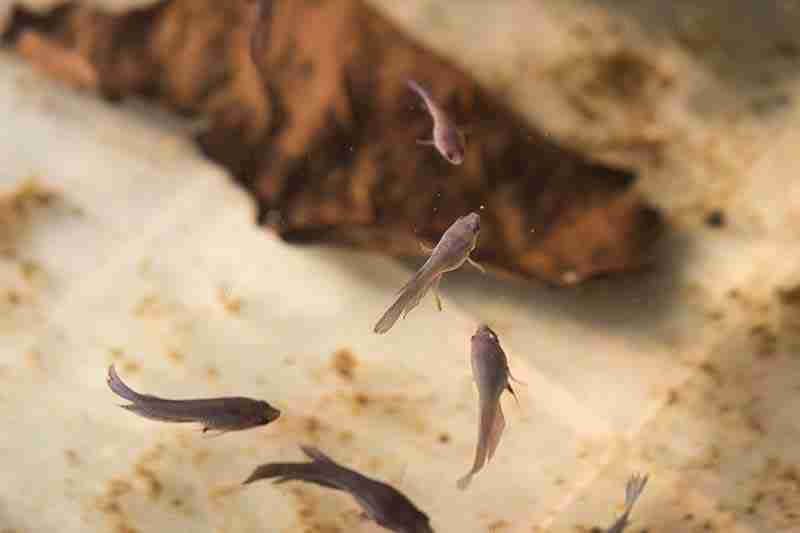
If you are interested in breeding betta fish, I would highly recommend reading Baby Betta Fish (Care and Feeding Guide).
Conclusion
As you can see, the mating process of the betta fish is quite interesting, and there can be much back and forth hoping for a breeding pair to accept each other.
A pregnant female betta with no mate will drop her eggs, which will remain unfertilized whilst she grows more eggs ready for when a receptive male is found.
Once mating has occurred, it may be worth using a breeding tank to separate the male and female betta until the fry has hatched.
At some point after hatching, you might want to consider removing the male so there are no risks to the betta fry, and they can grow large enough to fend for themselves.


